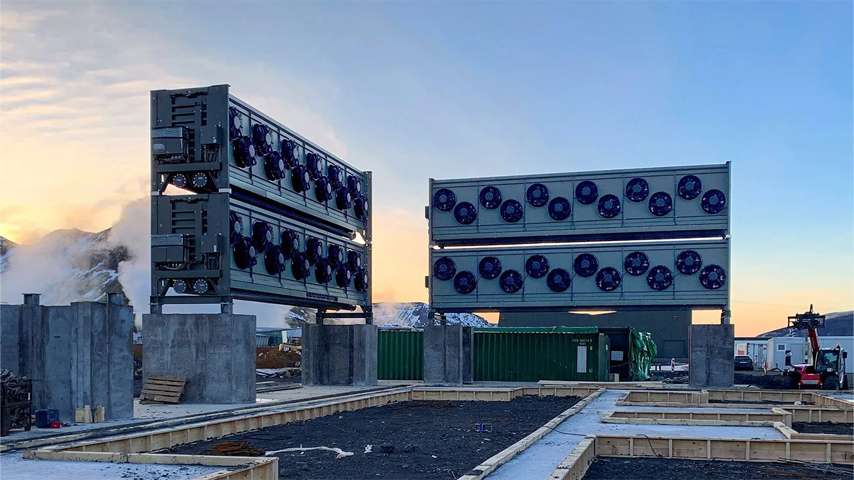Carbon Capture Costs Needs Reassessment, Engineers Say
Carbon Capture Costs Needs Reassessment, Engineers Say


The costs of direct-air carbon capture may be underestimated, MIT researchers report, which could lead to a misrepresentation of the contribution the technology could make in fighting climate change.
Direct air capture (DAC) and carbon capture and storage (CCS) technologies are attracting attention in the fight against climate change. DAC uses physical and chemical processes to extract carbon dioxide (CO2) from ambient air, and Google made a big splash in September 2024, when the company announced a deal to buy DAC from Holocene for just $100 a ton. That created a stir as that price is just a tenth of what competitors say are the costs to extract carbon via DAC.
Has DAC technology matured to a level where it can capture CO2 cheaply and efficiently? Or should the excitement be tempered?
“Direct air capture has people excited because in terms of generating carbon removal credits, they’re very high quality,” said Howard Herzog, senior research engineer at the Massachusetts Institute of Technology Energy Initiative (MITEI). But according to a recent commentary written by Herzog and colleagues at MITEI, any plans to rely on DAC to stem the surge of carbon dioxide into the atmosphere need a reality check. The plans rely on overly optimistic assumptions on cost and the ability to ramp up pilot projects to industrial scale.
“This can lead to highly misleading results that can ultimately impact the ability to reach climate stabilization goals,” Herzog and his coauthors wrote.
DAC technology includes large, powerful fans that draw ambient air from the atmosphere. The gases then undergo a series of chemical reactions within the capture station to separate carbon from the rest of the air. Because DAC targets normal atmospheric air, with a carbon dioxide concentration of 427 parts per million, rather than from industrial exhaust that may have a large fraction of CO2, the process is more challenging, energy intensive, and costly.

Boost Your Career
In terms of cost, “what we want to do is try to get the technology represented right,” Herzog said. “The reality is, it's a lot more difficult, a lot more expensive, than I would say the consensus in the literature is right now.”
From the magazine: Geothermal Drill Bits
Companies are interested in buying DAC-based carbon credits because DAC checks three key boxes when evaluating carbon credit quality—is it immediate, measurable, and permanent. Both CCS and DAC meet the permanence criteria as the captured CO2 is typically stored in deep geologic formations.
With DAC, “you take it out right there,” Herzog said, comparing the immediacy of DAC with the example of carbon credits based on efforts such as tree planting, which takes years to remove carbon from the air. “You can measure the CO2 you take out of the air,” Herzog said, “though you still need a life cycle analysis to see what the net is.”
Part of that life cycle analysis requires taking account of building and operating the capture facilities. “You need to process a heck of a lot of air just to get one ton of CO2,” Herzog said. “That’s a lot of expense, especially capital expenses.”
The energy draw of the capture stations cannot be ignored, Herzog continued. "It’s always going to be significant energy costs because of the physics of the problem,” he said. And unless that power comes from an electric grid that is saturated with carbon-free sources, such as wind, solar, nuclear, or geothermal, a full accounting of the life cycle of the facility would show it is adding carbon to the atmosphere.
Companies are forging ahead in developing and optimizing DAC technology. In addition to Holocene, which is headquartered in Knoxville, Tenn., Carbon Engineering of Squamish, B.C., and Zurich-based Climeworks have reported progress in recent years. For instance, Climeworks opened a direct-air carbon-capture with a capacity of up to 36,000 tons of CO₂ per year in Iceland in 2024. (The capacity is roughly 10 times greater than its pilot plant.)
While Climeworks did not release its costs for carbon removal, reports have estimated it to be about $1,000 a ton. The company said it was aiming to reach a $400-$600 a ton cost range.
If that Climeworks or other DAC companies can reach that level without ignoring important costs or other accounting tricks, that would be an important milestone. Herzog said ongoing dialogue with other respected experts in the field has convinced him that if a price of $500 a ton is achievable, DAC can be a key factor in the energy transition.
“We don’t come out and say, you should ignore direct air capture,” Herzog said.
“If we really say we're going to hit net zero, you need carbon removal technologies, because you're never going to get rid of all the CO2 emissions,” he added.
Nancy Kristof is a technology writer in Denver, Colo.